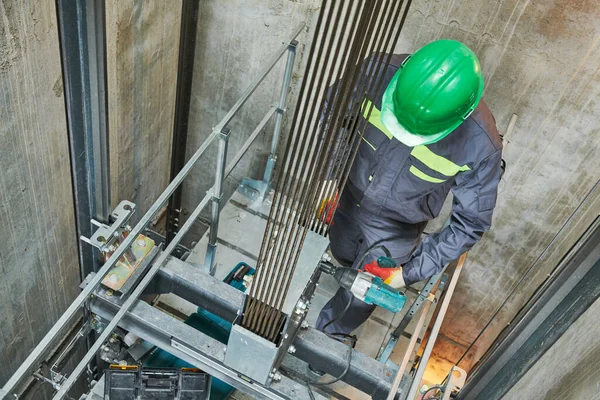Discovering the Comprehensive Actions Required for Lift Upkeep
In the world of building upkeep, ensuring the proper performance and safety of lifts is vital. By addressing crucial aspects such as positive upkeep schedules, safety checks, and emergency situation preparedness, a thorough understanding of the complexities entailed in lift upkeep can lead to improved performance and safety and security.
Routine Examinations
When it comes to making certain the long life and safety of your lift system, regular evaluations are critical. These routine checks play a critical function in determining any potential issues before they escalate into major troubles, making certain the smooth and safe operation of the lift. By conducting regular evaluations, maintenance teams can proactively resolve damage, defective components, or any other problems that might jeopardize the lift's efficiency or security.
During these inspections, trained specialists completely analyze various facets of the lift system, consisting of mechanical parts, electric systems, safety and security attributes, and general structural honesty (lift maintenance contract). They search for signs of wear, deterioration, leaks, or any abnormalities that could show a trouble. Furthermore, they verify that all safety and security systems are functioning appropriately and in conformity with regulations. By detecting and resolving problems early on, these inspections assist avoid pricey repairs, downtime, or security hazards, eventually extending the life-span of the lift system and guaranteeing the well-being of its users.
Positive Upkeep Schedules
Applying proactive maintenance schedules is necessary for taking full advantage of the performance and long life of lift systems. By sticking to a proactive maintenance approach, lift owners can deal with prospective problems prior to they intensify right into major issues, eventually minimizing downtime and pricey fixings. Aggressive upkeep entails normal examinations, lubrication of relocating components, screening security functions, and changing worn elements. These arranged maintenance tasks not only help in avoiding break downs however likewise add to preserving the lift's performance at optimal degrees.
A well-structured positive upkeep schedule must detail details tasks, regularities, and responsible employees. It is crucial to comply with supplier suggestions and industry criteria when producing these timetables to make certain the lift operates securely and efficiently. Furthermore, recording upkeep tasks and maintaining in-depth records can offer beneficial insights right into the lift's performance in time, aiding in determining patterns and making educated upkeep decisions.

Safety Conformity Checks
Guaranteeing safety compliance via complete checks is critical in preserving lift systems' reliability and guarding user well-being. Safety and security compliance checks include a comprehensive analysis of numerous components, consisting of electric systems, mechanical parts, emergency situation brakes, doors, and various other critical security features. These checks are necessary to determine any possible dangers or malfunctions that might endanger the lift's procedure and put customers in danger.
Normal safety and security compliance checks need to be conducted by qualified professionals in adherence to industry regulations and standards. These checks assist in finding concerns beforehand, permitting for prompt repair work and preventive maintenance procedures to be applied. Additionally, maintaining detailed records of security compliance checks is crucial for tracking the lift system's performance with time and showing conformity with safety laws.
Equipment Upgrades and Modernization
Enhancing lift systems through tools upgrades and modernization is article vital for boosting efficiency and safety requirements in vertical transport. As modern technology breakthroughs, older lift systems may end up being out-of-date, leading to decreased integrity and prospective safety and security dangers. By purchasing tools upgrades and innovation, building owners can guarantee that their lifts fulfill existing industry criteria and regulations.

Along with operational advantages, tools upgrades and innovation jobs can additionally enhance the visual appeals of the lift, supplying a much more appealing and modern experience for travelers. Inevitably, buying lift upgrades and innovation is a positive strategy in the direction of ensuring the long life, security, and performance of upright transportation systems.
Emergency Readiness Preparation
A reliable emergency situation preparedness strategy is critical for guaranteeing the safety and swift reaction in case of unanticipated events involving lift systems. Emergency situation preparedness planning my response for lift systems involves a methodical technique to reduce dangers, make sure passenger safety, and reduce downtime throughout emergencies.
Secret elements of an emergency preparedness prepare for lifts include clear communication methods, regular training for lift operators on emergency situation procedures, and routine drills to examine the efficiency of the plan. lift maintenance contract. this link In addition, the plan needs to outline details functions and responsibilities for all stakeholders involved, consisting of structure monitoring, upkeep workers, and emergency situation -responders
In case of a lift malfunction or entrapment, having a distinct emergency situation plan can help in coordinating a timely and effective response to make sure the safety and well-being of travelers. Timely communication, access to emergency situation devices such as communication devices and emergency illumination, and expertise of discharge procedures are necessary facets of an extensive emergency situation preparedness plan for lift systems. By focusing on emergency situation readiness preparation, structure supervisors can boost the general safety and security and integrity of their lift systems.
Final Thought
In conclusion, the detailed measures required for lift maintenance include regular evaluations, positive upkeep timetables, safety and security conformity checks, devices upgrades and innovation, and emergency readiness planning. These steps are necessary for making sure the safety, integrity, and efficiency of lifts in different settings. By carrying out these steps, lift owners can lessen the risk of mishaps, extend the lifespan of their tools, and abide by market regulations.

During these evaluations, educated experts extensively examine various elements of the lift system, including mechanical parts, electrical systems, safety attributes, and general architectural integrity.Making certain safety conformity via thorough checks is vital in preserving lift systems' dependability and safeguarding user well-being. Keeping detailed documents of safety and security conformity checks is vital for tracking the lift system's performance over time and demonstrating compliance with security policies.
By focusing on emergency situation preparedness planning, structure managers can improve the overall security and integrity of their lift systems.